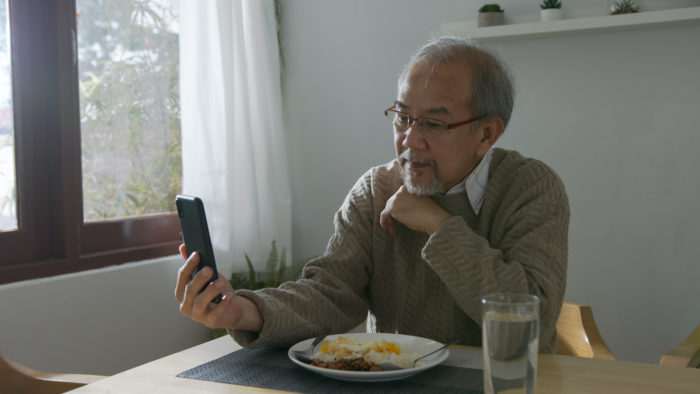How Telehealth Changed My Mom’s Life
April 26, 2021
By Donna Spencer
Watching a patient eat. Asking about family photos on the nearby coffee table. Observing the living space. These are all benefits of telemedicine that help doctors see their patients through a new lens.

I’ve seen these benefits play out firsthand for my mom. She has Huntington’s disease, a rare, progressive movement disorder that causes breakdown of nerve cells in the brain. It’s affected her muscle control and balance and has made it hard for her to swallow.
For years, my dad regularly drove her to see a specialist that was four hours away. As a family, we liked that clinic because of its patient-centric environment. They felt like family. The distance became too much as her physical ability and mental capacity declined, so we found her a different doctor closer to home. Soon, even that trip became difficult. The travel, though it was a shorter distance, made her weary. The sterile exam room made her anxious. Getting through the visit was sometimes a challenge.
Then COVID-19 happened, and the pandemic forced many of her appointments to a virtual setting. Telehealth cannot replace all in-person care, of course, but I’ve seen how it can provide insight that couldn’t be captured in a doctor’s office.
Last month, for example, we timed my mom’s breakfast so she’d still have some food to eat when her telehealth appointment started. She wanted the doctor to see how much improvement she’d made with eating independently and swallowing. She had a bout of aspiration pneumonia last year, where she breathed food into her lungs instead of her stomach, so her swallowing ability is now something we closely monitor. It was nice for the doctor to see her eat, rather than tell him about it, as part of her assessment.
Telemedicine has also allowed the doctor to monitor my mom’s mobility. For some appointments, I’d hold up the iPad so he could watch her walk. Seeing her living space allows him to point out any potential tripping hazards, like rugs, that could be dangerous.
Her appointments also include a cognitive assessment. One day, instead of asking my mom to name the year or the president, or count backward from 20, the doctor asked her about our large family. She turned toward the mural of family photos behind her and started recalling wedding dates and facts about her grandchildren. She smiled comfortably, showing a level of calm I’ve never seen from her during a doctor’s appointment. It was as if she was talking to a friend.
Many people thought they’d be sacrificing quality of care when COVID-19 first made telemedicine visits necessary. But for patients like my mom, the opposite is true. In fact, virtual visits offer unique benefits, such as giving doctors new insights into patients’ lives. By cutting out the anxiety and hassle of in-person visits, virtual visits also allow people with rare conditions to receive personalized care from a specialist in an environment where they feel safe and most comfortable.
In-person care isn’t going away anytime soon; nor would we want it to. But it turns out telemedicine isn’t just a short-term substitute. It’s a whole new option for delivering the quality care that helps patients like my mom live a fuller, healthier life.

Donna Spencer is an education co-chair for the Huntington’s Disease Youth Organization and a member of the Alliance for Patient Access’ Neurological Disease Working Group.
Tags: Neurological, Rare Disease, TelehealthCategorized in: Blog

